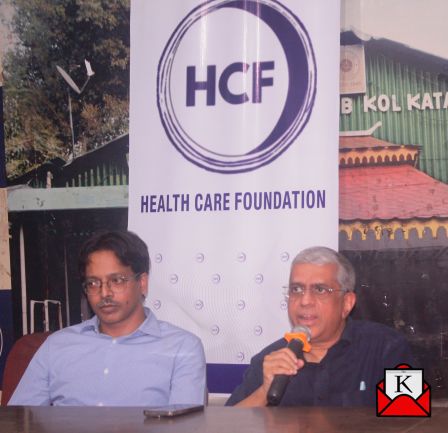Mitral Regurgitation Can Now Be Treated With M-TEER


The most recent treatment for a damaged mitral valve that causes blood to leak is an interventional procedure to repair the heart’s mitral valve. Mitral regurgitation (MR) is the name of the cardiac condition. The risks connected with open heart surgery are decreased by this innovative technique. The Healthcare Foundation, a group dedicated to raising awareness of health issues, held a press conference at the Press Club Kolkata to announce the arrival of a medical advancement in Kolkata.
According to renowned cardiologist Dr. Suvro Banerjee, the mitral valve regulates blood flow between the left atrium and left ventricle, the two vital heart chambers they are situated. When the mitral valve fails to close completely, blood can flow backwards from the left ventricle into the left atrium, causing back pressure on the lungs. This condition is known as mitral regurgitation (MR). Because the heart must work harder to pump blood into the left ventricle against the backflow of blood regurgitating through the mitral valve, MR puts a significant amount of strain on the heart.
Leg swelling, exhaustion, and shortness of breath can result from MR’s accumulation of fluid in the body and lungs. Atrial fibrillation, or irregular heart rhythm, worsening liver and kidney function, heart failure, and even death are possible outcomes in later stages.
If left untreated, MR typically gets worse over time. Even with the best medical care, long-term MR can cause heart failure symptoms and signs, such as fatigue, fluid overload, and dyspnoea, even though medications can lessen the symptoms. In these situations, fixing the leaking mitral valve may require surgery. Up until recently, open heart surgery was required to repair the mitral valve. A general anaesthetic, a cut to the breast bone, and open heart surgery are necessary for this procedure. There may now be a less invasive option for mitral valve repair, which involves using a catheter—a thin, flexible tube—to repair the valve percutaneously, or “through the skin” via the groin. Neither open heart surgery nor a cut to the breastbone is necessary for this procedure. The process is known as Mitral Transcatheter Edge to Edge repair (M-TEER). The first M-TEER-approved device is Mitraclip.
Dr. Sumanto Mukhopadhyay, one of our nation’s top cardiologists and mitraclip specialists, attended the press conference in Kolkata. According to Dr. Mukhopadhyay, M-TEER is a one-day procedure. The cardiac catheterisation lab is where the patient will be brought. The physician will employ “transoesophageal echo” (TOE) after he is sedated.
A TOE is a unique kind of ultrasound that creates incredibly clear images of the heart using sound waves. This aids medical professionals in positioning the clip onto your mitral valve and guiding the catheters into your heart.
Following the procedure, the patient will be admitted to either the recovery unit or the intensive care unit for monitoring. The patient will be transferred to a cardiology ward and released in one to two days after the condition stabilises.
In order to fully prepare and finish any necessary investigations, patients typically arrive at the hospital the day before their mitraclip.
By lowering mitral regurgitation, this procedure lessens fluid overload and heart failure symptoms. As a result, it raises survival, lowers the rate of repeated hospitalisations, and improves quality of life.
With extremely high success rates, it is a very low-risk procedure. Even patients who are very old or have a high risk of surgery can have it done.
Priyanka Dutta
